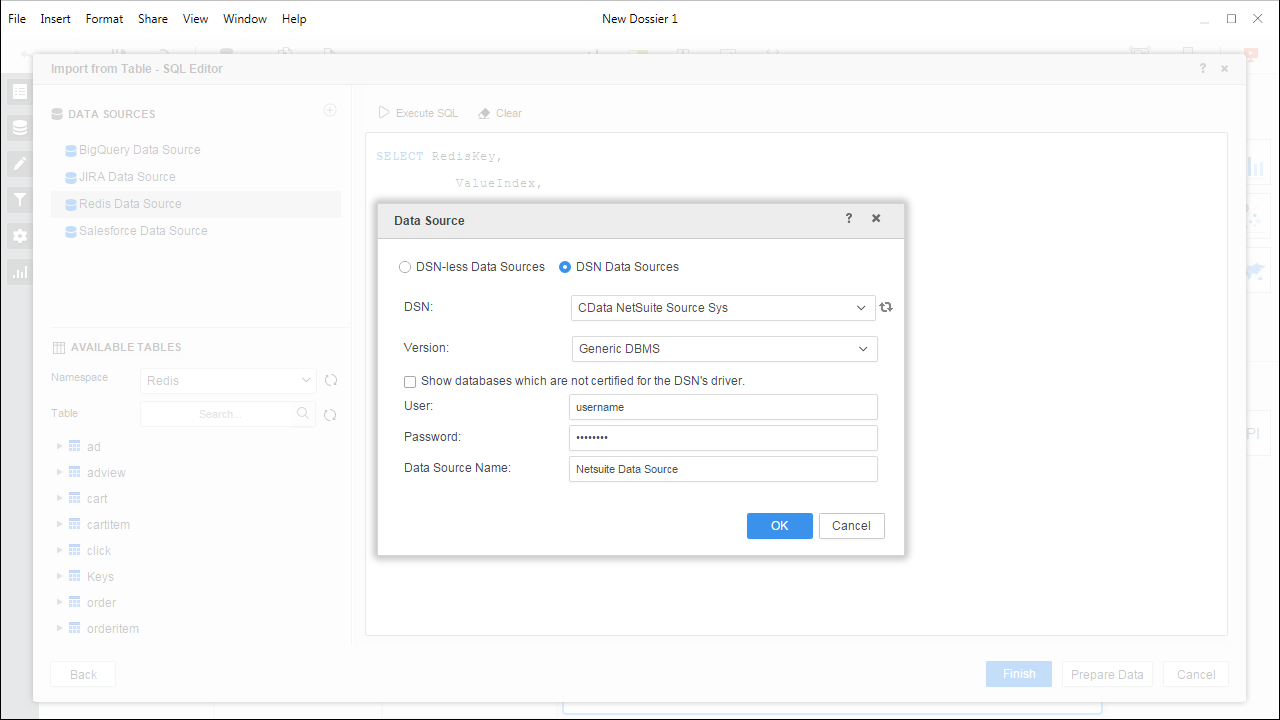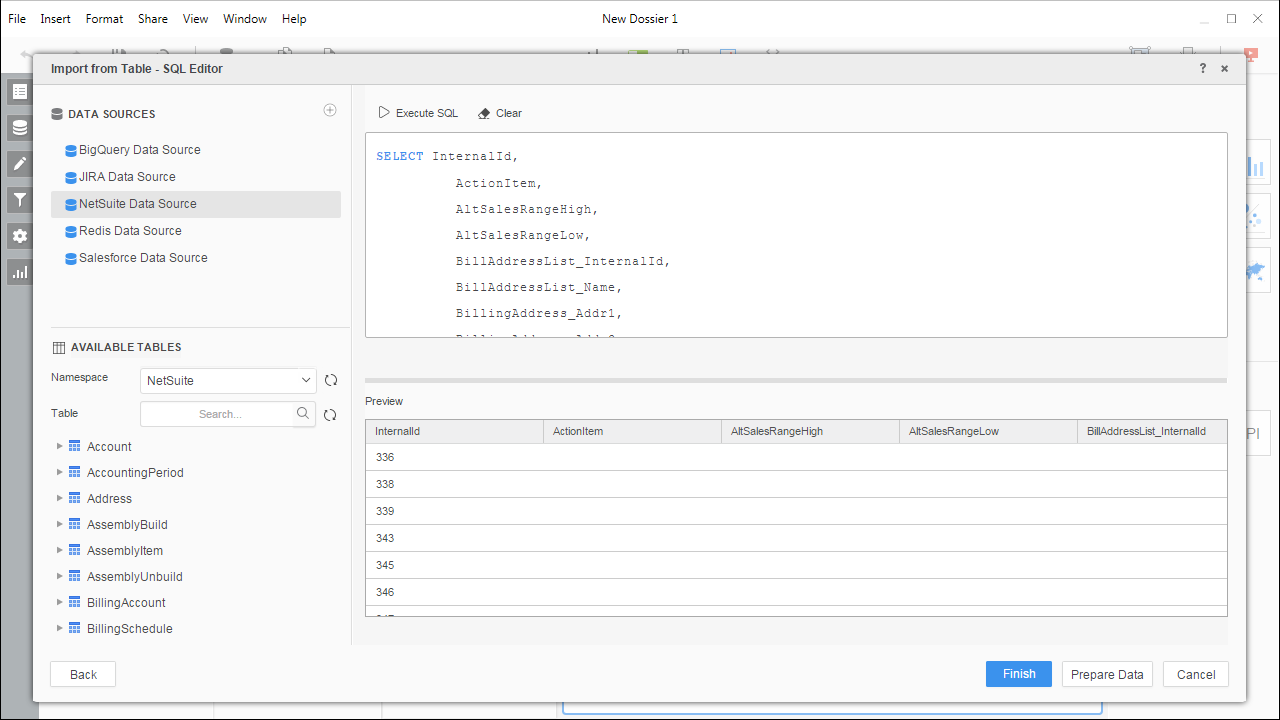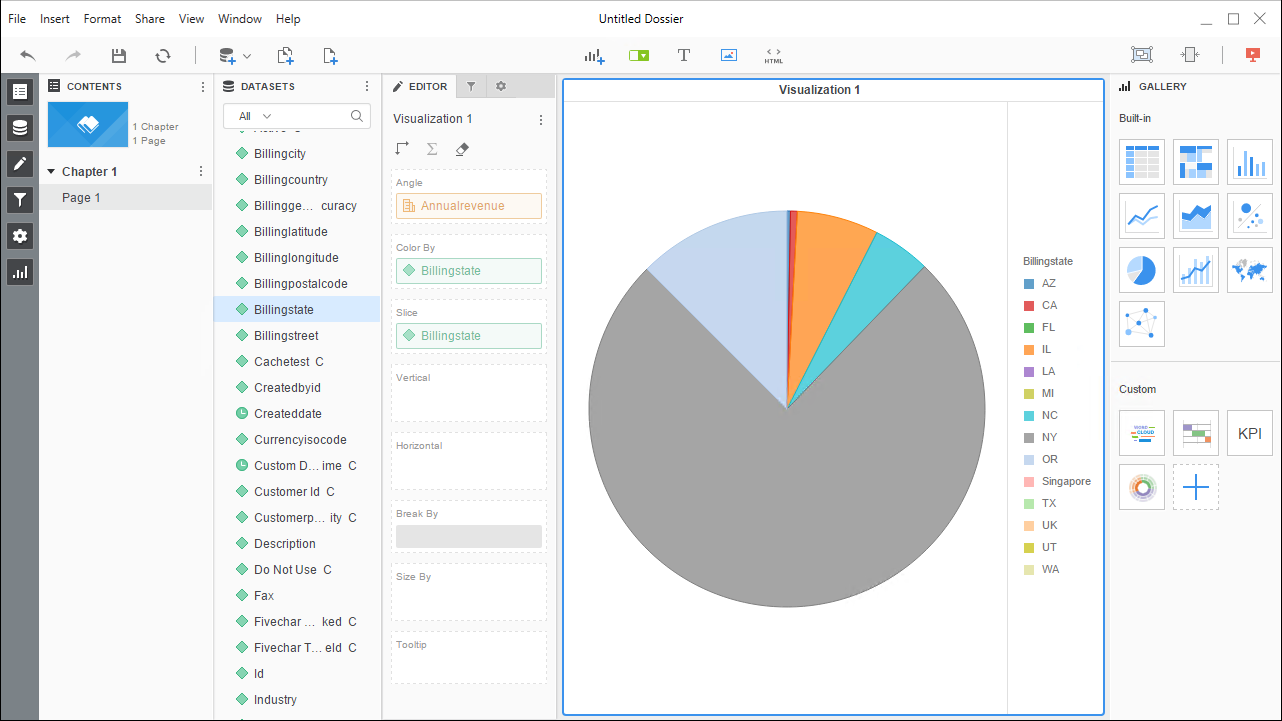Model Context Protocol (MCP) finally gives AI models a way to access the business data needed to make them really useful at work. CData MCP Servers have the depth and performance to make sure AI has access to all of the answers.
Try them now for free →Use the CData ODBC Driver for Snowflake in MicroStrategy Desktop
Connect to Snowflake data in MicroStrategy Desktop using the CData ODBC Driver for Snowflake.
MicroStrategy is an analytics and mobility platform that enables data-driven innovation. When paired with the CData ODBC Driver for Snowflake, you gain database-like access to live Snowflake data from MicroStrategy, expanding your reporting and analytics capabilities. In this article, we walk through adding Snowflake as a data source in MicroStrategy Desktop and creating a simple visualization of Snowflake data.
The CData ODBC Driver offers unmatched performance for interacting with live Snowflake data in MicroStrategy due to optimized data processing built into the driver. When you issue complex SQL queries from MicroStrategy to Snowflake, the driver pushes supported SQL operations, like filters and aggregations, directly to Snowflake and utilizes the embedded SQL Engine to process unsupported operations (often SQL functions and JOIN operations) client-side. With built-in dynamic metadata querying, you can visualize and analyze Snowflake data using native MicroStrategy data types.
About Snowflake Data Integration
CData simplifies access and integration of live Snowflake data. Our customers leverage CData connectivity to:
- Reads and write Snowflake data quickly and efficiently.
- Dynamically obtain metadata for the specified Warehouse, Database, and Schema.
- Authenticate in a variety of ways, including OAuth, OKTA, Azure AD, Azure Managed Service Identity, PingFederate, private key, and more.
Many CData users use CData solutions to access Snowflake from their preferred tools and applications, and replicate data from their disparate systems into Snowflake for comprehensive warehousing and analytics.
For more information on integrating Snowflake with CData solutions, refer to our blog: https://www.cdata.com/blog/snowflake-integrations.
Getting Started
Connect to Snowflake as an ODBC Data Source
Information for connecting to Snowflake follows, along with different instructions for configuring a DSN in Windows and Linux environments.
To connect to Snowflake:
- Set User and Password to your Snowflake credentials and set the AuthScheme property to PASSWORD or OKTA.
- Set URL to the URL of the Snowflake instance (i.e.: https://myaccount.snowflakecomputing.com).
- Set Warehouse to the Snowflake warehouse.
- (Optional) Set Account to your Snowflake account if your URL does not conform to the format above.
- (Optional) Set Database and Schema to restrict the tables and views exposed.
See the Getting Started guide in the CData driver documentation for more information.
When you configure the DSN, you may also want to set the Max Rows connection property. This will limit the number of rows returned, which is especially helpful for improving performance when designing reports and visualizations.
Windows
If you have not already, first specify connection properties in an ODBC DSN (data source name). This is the last step of the driver installation. You can use the Microsoft ODBC Data Source Administrator to create and configure ODBC DSNs.
Linux
If you are installing the CData ODBC Driver for Snowflake in a Linux environment, the driver installation predefines a system DSN. You can modify the DSN by editing the system data sources file (/etc/odbc.ini) and defining the required connection properties.
/etc/odbc.ini
[CData Snowflake Sys]
Driver = CData ODBC Driver for Snowflake
Description = My Description
User = Admin
Password = test123
Server = localhost
Database = Northwind
Warehouse = TestWarehouse
Account = Tester1
For specific information on using these configuration files, please refer to the help documentation (installed and found online).
Connect to and Visualize Snowflake Data using MicroStrategy Desktop
In addition to connecting Snowflake in MicroStrategy enterprise products, you can connect to Snowflake in MicroStrategy Desktop. Follow the steps below to add Snowflake data as a dataset and create visualizations and reports of Snowflake data.
- Open MicroStrategy Desktop and create a new dossier.
- In the datasets panel, click New Data, select Databases, and select Type a Query as the Import Option.
- Add a new data source and choose DSN data sources.
- Choose the DSN you previously configured (likely CData Snowflake Sys) and select Generic DBMS in the Version menu.
- Set the User and Password properties for the DSN (or use placeholder values) and name the data source.
- Select the new database instance to view the tables. You may need to manually click the search icon in the Available Tables section to see the tables.
- Create a SQL query for the Snowflake data (see below) and click Execute SQL to test the query.
SELECT * FROM Products![Querying Snowflake for data.]() NOTE: Since we create a live connection, we can execute a SELECT * query and utilize the filtering and aggregation features native to the MicroStrategy products.
NOTE: Since we create a live connection, we can execute a SELECT * query and utilize the filtering and aggregation features native to the MicroStrategy products. - Click Finish and choose to connect live.
- Choose a visualization, choose fields to display (data types are discovered automatically through dynamic metadata discovery) and apply any filters to create a new visualization of Snowflake data. Where possible, the complex queries generated by the filters and aggregations will be pushed down to Snowflake, while any unsupported operations (which can include SQL functions and JOIN operations) will be managed client-side by the CData SQL Engine embedded in the driver.
![Visualize Snowflake data.]()
- Once you are finished configuring the dossier, click File -> Save.

Using the CData ODBC Driver for Snowflake in MicroStrategy Desktop, you can easily create robust visualizations and reports on Snowflake data. Read our other articles on connecting to Snowflake in MicroStrategy and connecting to Snowflake in MicroStrategy Web for more examples.

 NOTE: Since we create a live connection, we can execute a SELECT * query and utilize the filtering and aggregation features native to the MicroStrategy products.
NOTE: Since we create a live connection, we can execute a SELECT * query and utilize the filtering and aggregation features native to the MicroStrategy products.
